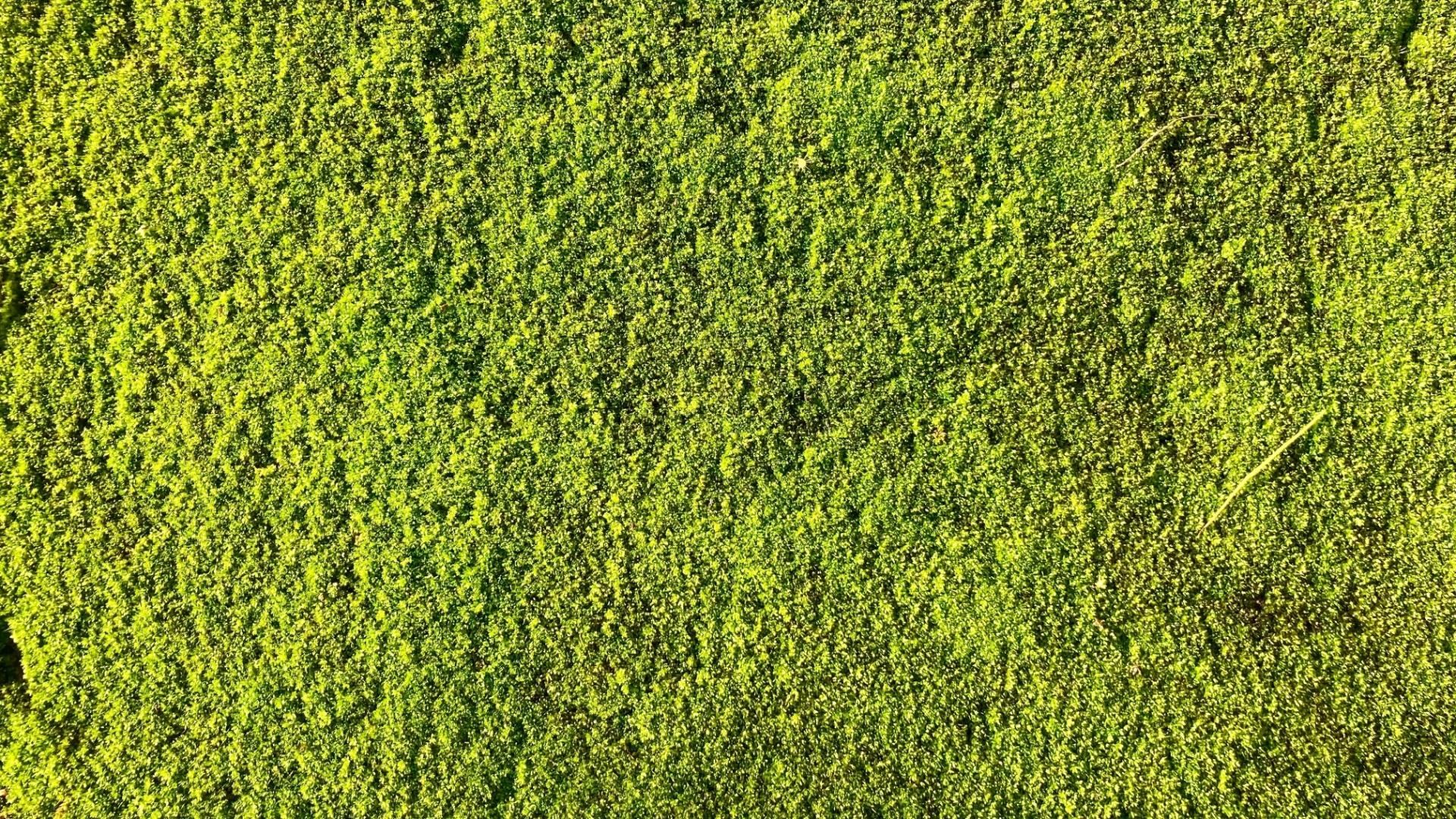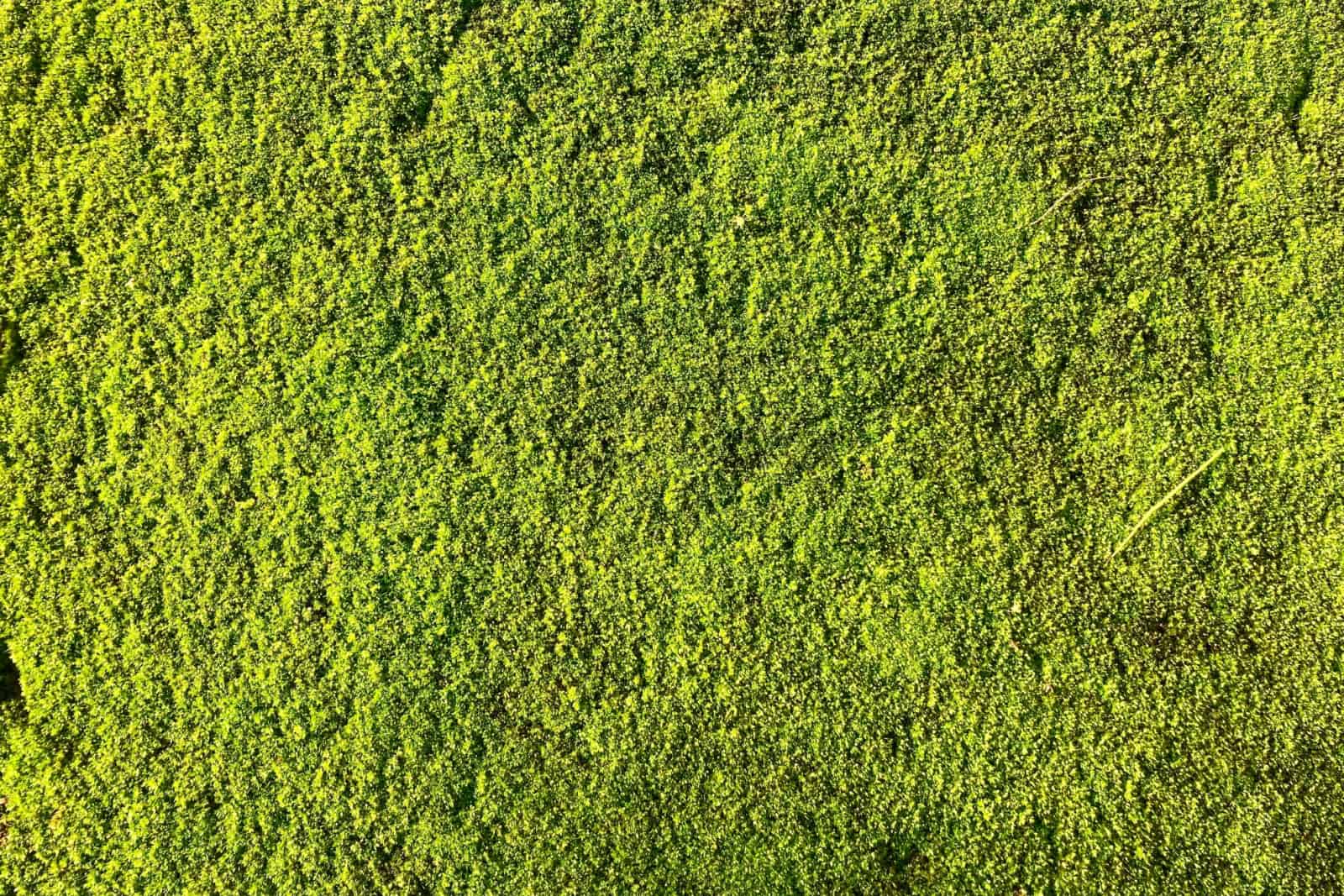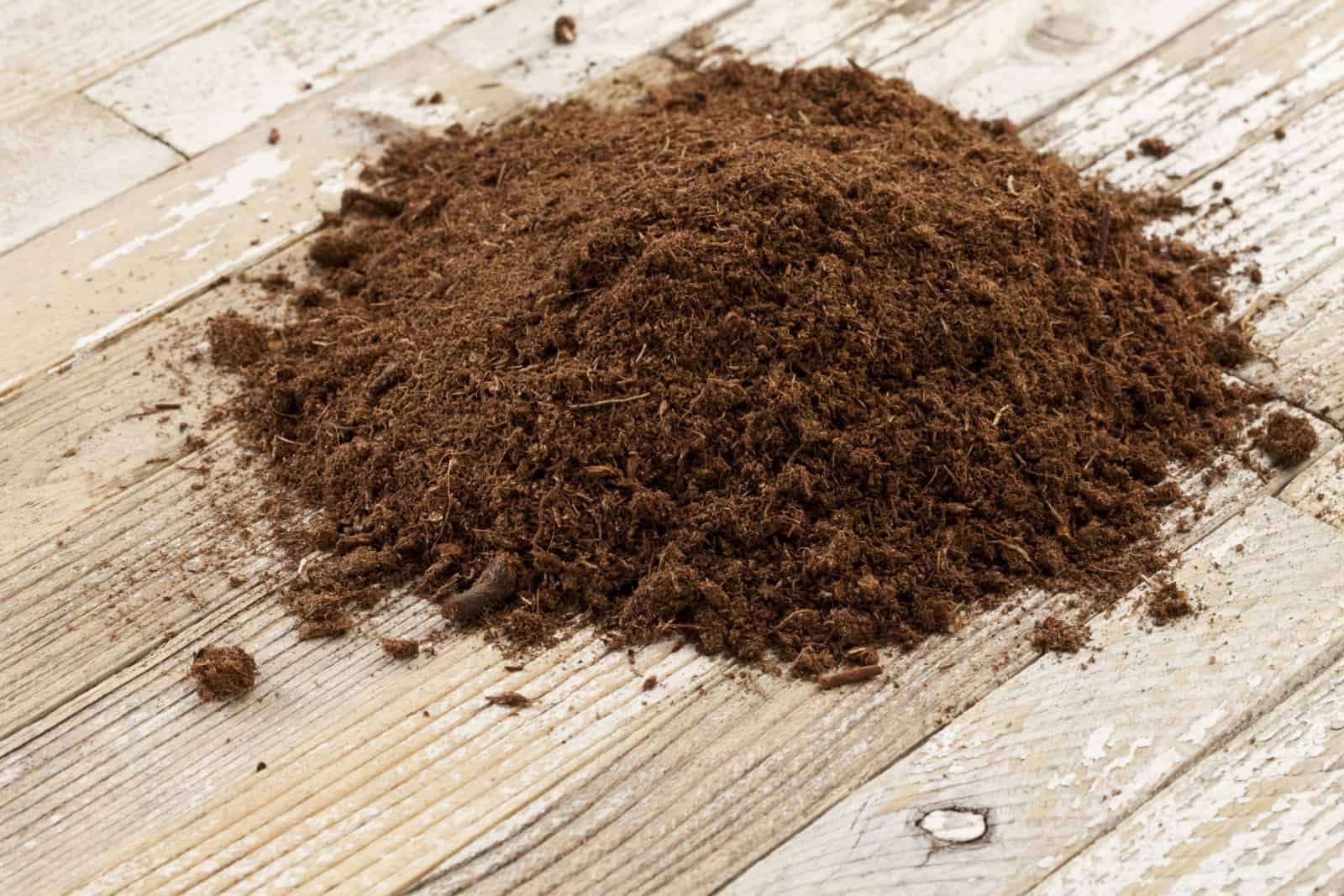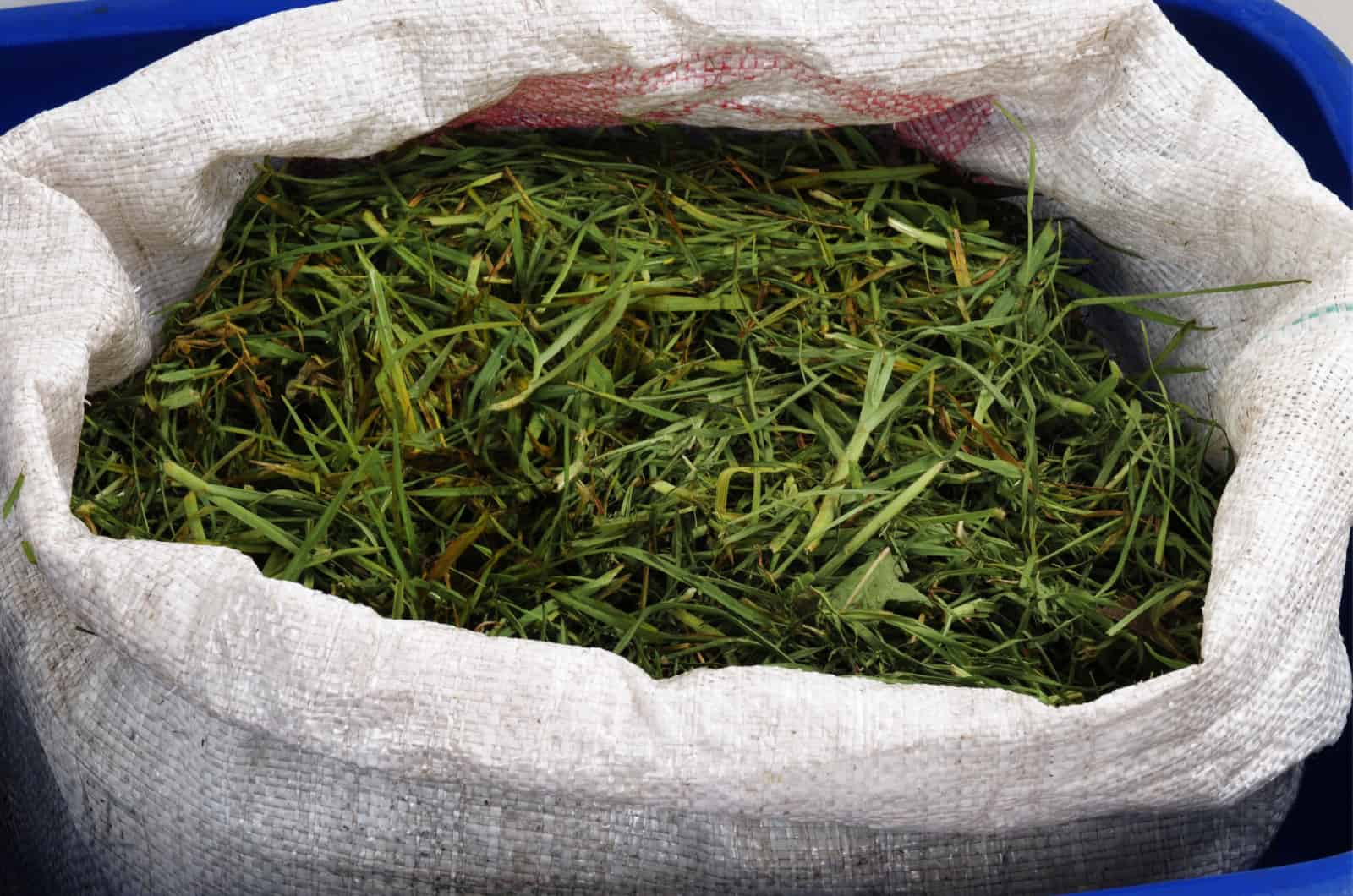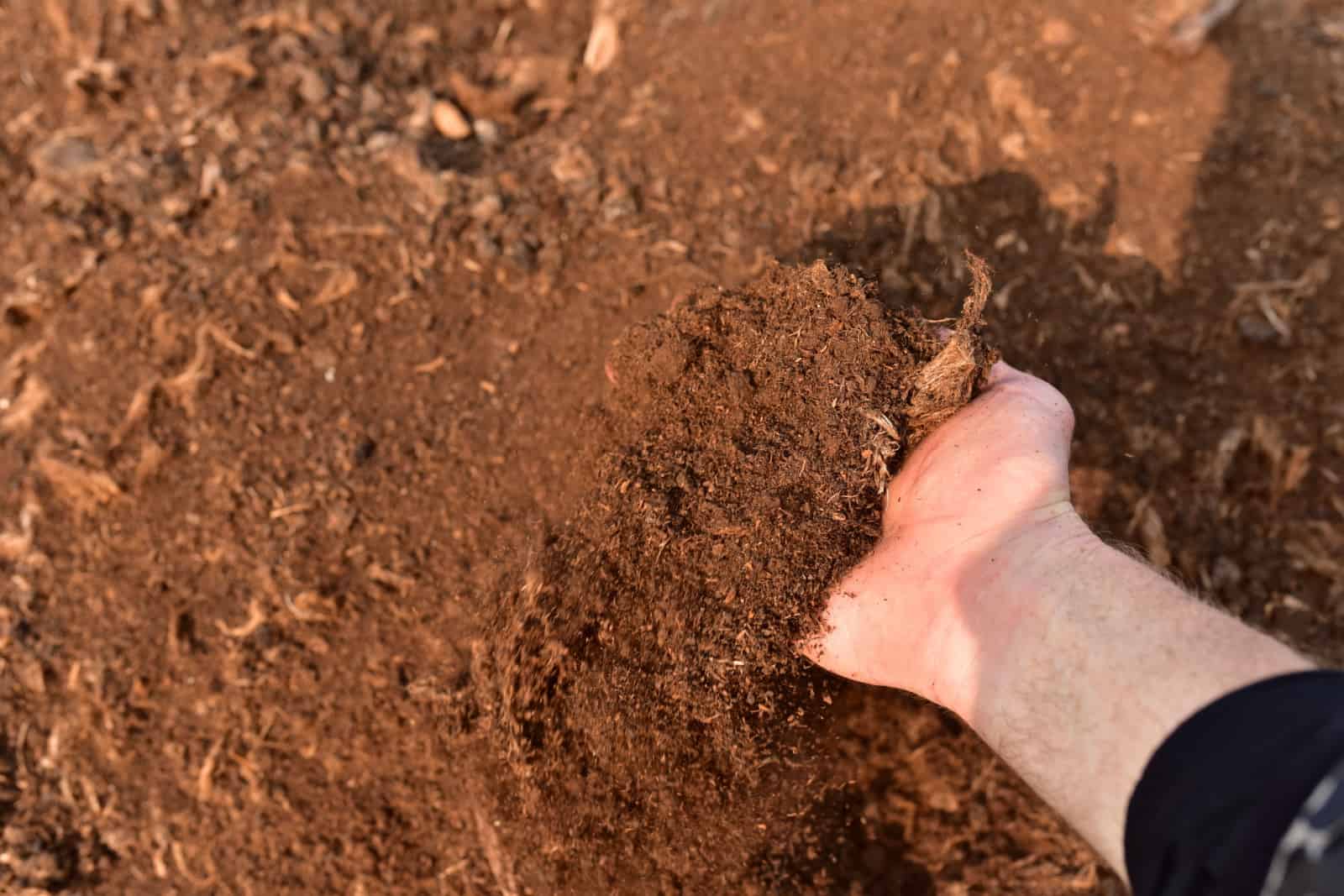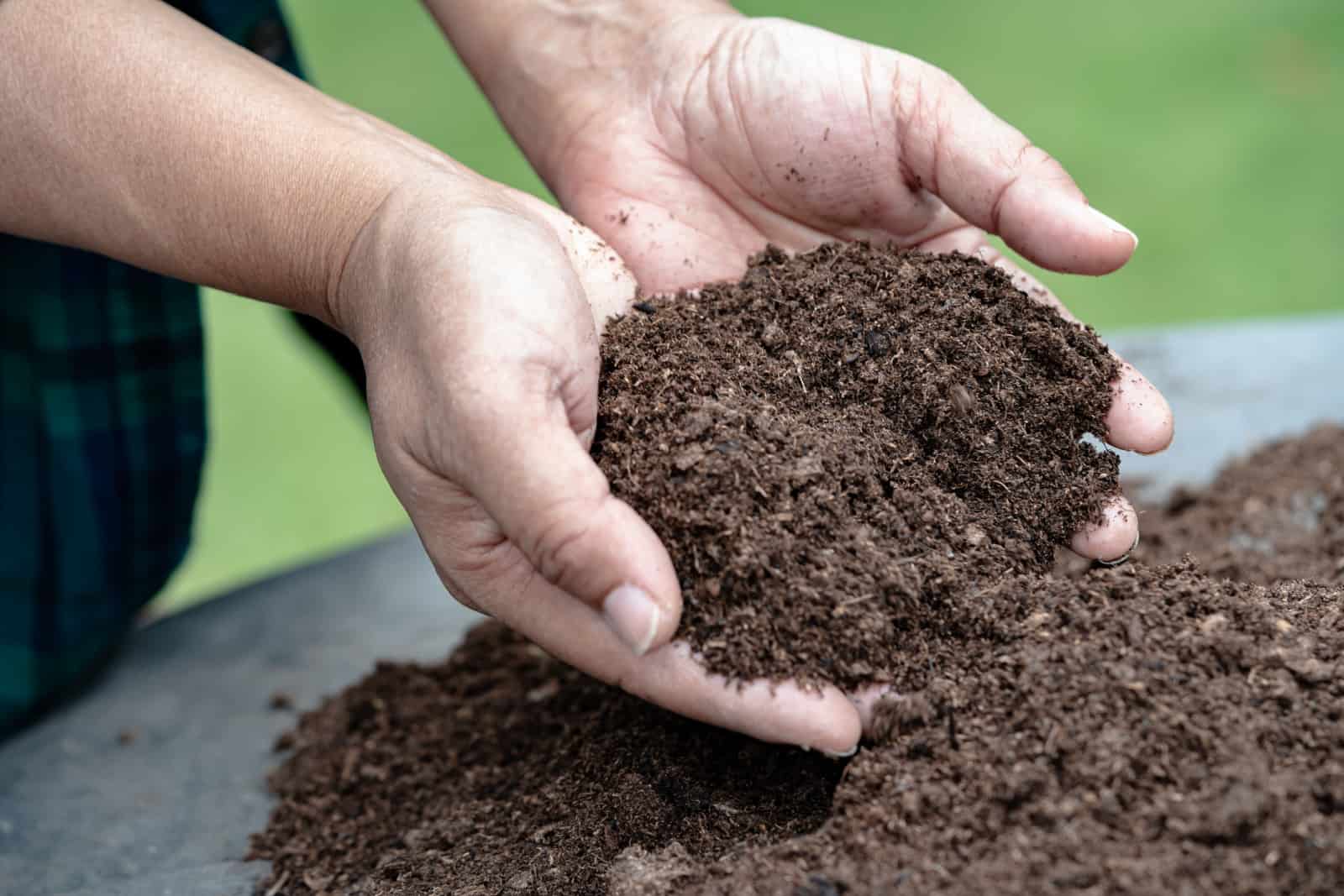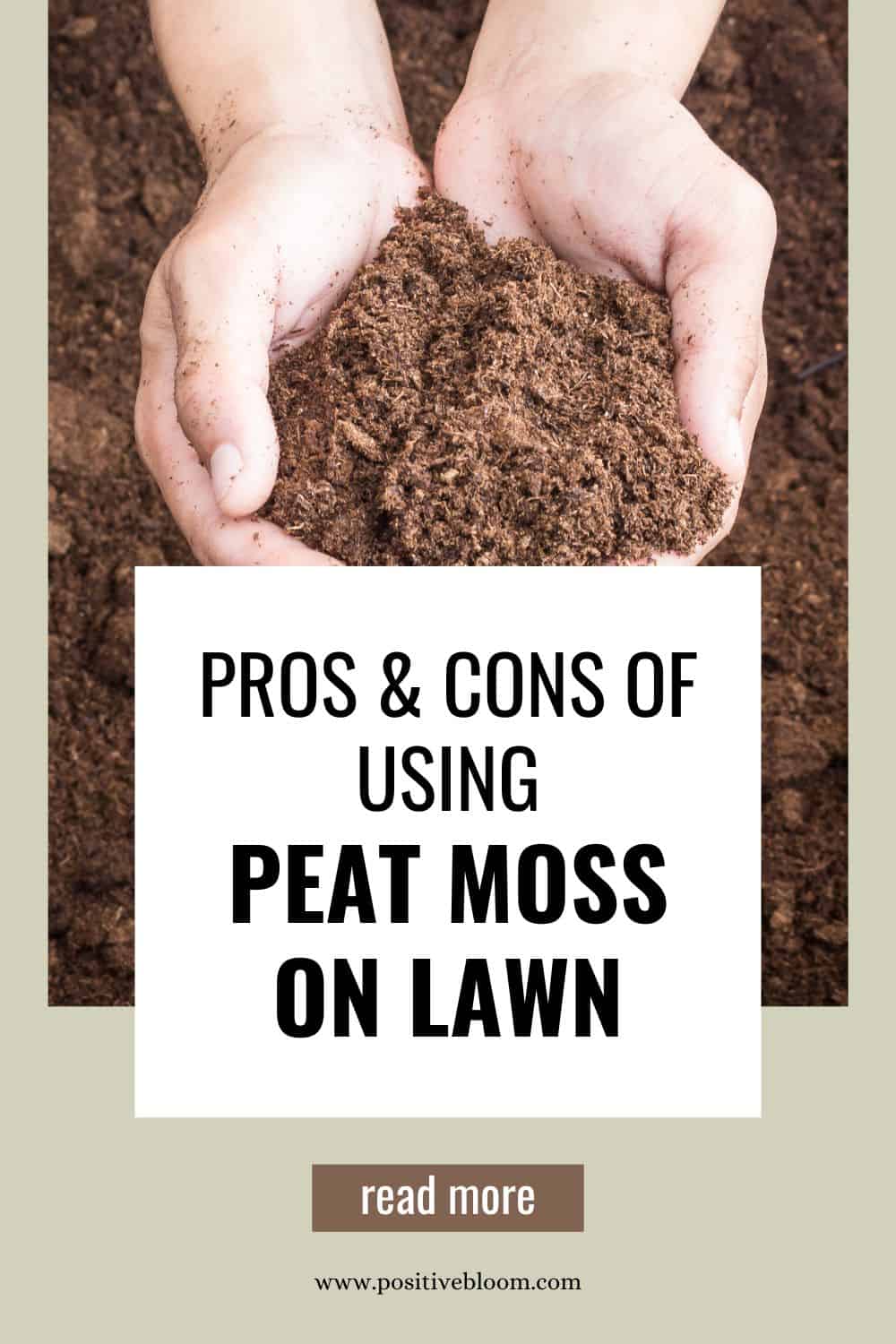Peat moss is a common soil amendment frequently used for houseplants. It is even an essential ingredient in ready-made soils.
But why is it so important?
Peat moss enriches the growing medium with organic matter, improves drainage and aeration, and retains moisture and nutrients. However, it also lowers the soil pH and makes it acidic, which isn’t suitable for all plants.
Many gardeners have wondered whether it’s possible to spread peat moss on lawn.
Of course, you can! There are some things you should take into consideration, such as the fact that it makes the soil acidic and isn’t eco-friendly per se, but it’s certainly a viable method.
Therefore, we decided to write this article which includes all the advantages and disadvantages of peat moss for lawns, discuss some common alternatives, and give you some tips for using it.
Benefits Of Peat Moss On Lawn
The main benefits of using sphagnum peat moss on lawn are that it protects the grass seeds from animals, helps with overseeding, improves soil texture, aeration, and water retention, and is sterilized.
I know we’ve all wondered, ”How fast does grass grow?” but if you use this soil amendment as a top dressing, you’ll definitely witness a faster growth rate and seed germination.
Protects New Grass Seeds
One of the main benefits of using peat moss in lawn care is that it keeps the grass seeds safe from scavengers such as mice and birds and windy and rainy weather conditions.
Strong rainfall may wash away the seeds, the wind will blow them, birds peck them, and mice will wait until they germinate and nibble on young grass blades.
All this may result in an uneven lawn, but adding a layer of sphagnum peat moss to your turf grasses will keep them safe.
When you water peat moss, it expands and protects the seeds from being carried away by winds, rain, or animals!
Helps With Overseeding
Peat moss is an excellent way to make your lawn greener because it can help with overseeding. When you sow grass seeds, you need to keep them moist all the time, or they will die if they dry out.
Peat moss retains a lot of moisture, so sprinkling it on top of grass seeds will keep them moisturized.
We know this material is considered long-lasting when put in potting mixes, but that’s not the same when you use it as a top dressing.
Peat moss decomposes in a couple of weeks, enriches the soil with organic material, and puts an end to thoughts of “How to make my lawn green and thick?”!
Improves Drainage And Aeration For New Lawn
The use of peat moss is an excellent way of aerating your lawn. This material decomposes over time and breaks down the compacted soil particles, which improves drainage and airflow in clay soils.
Also, some studies have shown how aerated soils have increased microbe activity, which decomposes organic material and makes nutrients widely available to your plants.
Nutrient And Moisture Retention
If you have issues with porosity in your sandy soils, you can add sphagnum peat moss to improve its water-holding capacity.
This ingredient can hold up to 20 times more moisture than it weighs dry and release it to the grassroots when they need it.
Peat moss also retains more nutrients in the soil, prevents fertilizer runoff from contaminating the underground waters and nearby substrates, and reduces the possibility of nutrient deficiencies in plants.
Sterilized Top Dressing
One of the benefits of peat moss that tops almost all other alternatives is that it is sterile. That means it contains no weed seeds, harmful bacteria, or fungi that can affect your grass growth.
Therefore, this product is an excellent top dressing because it won’t contaminate the grass seeds or seedlings and will keep them safe during their most vulnerable stages.
Suppresses Root Rot
Even though peat moss doesn’t contain microbes that aid in decomposition and release nutrients into the soil, it does contain microorganisms that help keep root rot in check.
The beneficial organisms found in peat moss synthesize antibiotics that discourage Pythium, Fusarium, and Rhizoctonia root rot.
Drawbacks Of Using Peat Moss For Lawn Care
Even though this soil amendment has many benefits, there are certain aspects that put growers off using it.
For instance, peat moss can acidify the soil, which makes it difficult for the grass seeds to germinate. It is also not a sustainable resource, its harvest promotes the destruction of peat bogs, and it is expensive and doesn’t contain any nutrients.
These are all serious drawbacks, and we’ll explain them in more detail in the following sections.
Acidifies The Soil
The main reason most landscaping experts advise against using peat moss on lawn is because it has a high acid content and can prevent germination.
The seeds can germinate in neutral to mildly acidic soils with a pH between 5.5-7.0, and adding excessive amounts of peat moss can be quite detrimental.
However, you can fix this issue by adding lime, which will make the soil less acidic so your lawn can thrive again.
Then, if your grass seeds are still not germinating, you can look for other causes, such as lack of light, moisture, inadequate temperature, etc.
Leads To Root Rot
Grass loves hydration, but adding too much peat moss can retain significant amounts of moisture and lead to root rot.
This ingredient holds about 20 times more water than it weighs dry, so you should cover your grass seeds with only a quarter of an inch thick layer.
Not Eco-Friendly
Harvesting peat moss from the wetlands is terrible for the environment because it releases large carbon dioxide emissions into the air.
This greenhouse gas contributes to climate change, so using this material is not eco-friendly.
There are many alternatives to peat moss, such as compost, coco coir, grass clippings, etc., which are sustainable resources and don’t hurt the climate.
Expensive
Buying a small bag of sphagnum peat moss doesn’t seem expensive because you can get a quart for $10. But if you need to cover many square feet with this material, the numbers add up.
Also, you should never use this material as mulch because it is expensive to cover your entire yard with it, and it isn’t practical or effective.
The wind can easily carry it away, and it doesn’t suppress weed growth, which is one of the primary purposes of mulch, in addition to moisture retention and enriching the soil with nutrients.
Doesn’t Contain Nutrients
Peat moss contains almost no nutrients, so it’s not a good solution for infertile soils. It can hold nutrients, but then you need to use fertilizers or compost.
Therefore, it makes much more sense to use nutrient-rich soil amendments such as humus, which improve drainage and aeration and make the soil more fertile.
Peat Moss Alternatives
Good substitutes for peat moss are compost, straw, worm castings, grass clippings, organic fertilizers, shredded leaves, and coco coir.
These materials come from sustainable resources, so they won’t affect the environment in any way. Of course, there are dangers of using shredded leaves, grass clippings, and compost because they aren’t sterilized, but you can always flush them with boiling water to kill the bacteria and fungi.
And if you don’t want to risk it with these materials, you can get the best fertilizer for new turf or use worm castings and enjoy your green and healthy lawn.
Is Peat Moss Good For St. Augustine And Fescue grass?
Yes, you can use peat moss for these grasses, whether you want to overseed them or help them recover. This material will retain moisture and the nutrients that these grasses desperately need during this time.
You can also use some peat moss alternatives, such as compost, a mix of compost and topsoil, coconut coir, straw, etc.
4 Methods Of Applying Peat Moss To My Lawn (With And Without Spreader)
Now that you know all the pros and cons of using peat moss on lawn, let’s learn some methods and techniques to help you apply this material correctly.
You can use it before and after sowing grass seeds, on existing lawns, and for recovering damaged grass patches.
Applying Before Seeding
You can use this material before planting grass seeds to make the soil less compact and improve aeration.
Spread a one-to-three-inch-thick layer of peat moss on the ground and mix it with the soil. Make sure to work it to a depth of at least six inches to aerate it for the grassroots.
Using As A Top Dressing
When applying peat moss as a top dressing, use a thin layer of this material (a quarter or even 1/8 of an inch) to prevent excess moisture retention and rotting.
After applying the moss over the seeds, rake it all to ensure that everything is covered. Water the area thoroughly, and you’re done!
Applying On Existing Lawn
If you want to give your lawn an additional boost by helping it retain more moisture, you can spread a layer of a quarter or half an inch of peat moss over it and rake it.
This method will help decompose the thatch, so it won’t trap the grassroots anymore or prevent water and fertilizers from reaching them.
Using Peat Moss In Damaged Areas
If animal urine, sun, or disease have damaged your lawn, you can use peat moss to recover it.
Spread a two-inch-thick layer, work it well into the soil (at least six inches deep), sow the grass seeds, and cover everything with another layer of peat (no more than a quarter of an inch thick this time).
This method will improve soil aeration, help decompose thatch, and keep the seeds safe and moist while germinating.
Final Thoughts
There are various opinions on using peat moss on lawn since this material improves drainage and aeration, increases nutrient and moisture retention, and helps with germination and overseeding.
However, it can acidify the soil if you use too much, and using it doesn’t help the environment because harvesting wetlands and peat bogs releases a lot of CO2 into the atmosphere.
Luckily, there are some excellent alternatives, such as compost, worm castings, grass clippings, straw, coco coir, organic fertilizers, etc.
And if you do want to try to breathe life into your lawn using peat moss, we presented four methods of doing that.
Until next time!
Like this post? Share or pin it for later!

